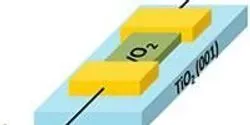All by Penn State
Filter by
AllArticlesAudioEbooksEventsInfographicsNewsProductsSurveysDocumentsVideosVirtual EventsWebinars
Current computing is based on binary logic – zeroes and ones – also called Boolean computing. A new type of computing architecture that stores information in the frequencies and phases of periodic signals could work more like the human brain to do computing using a fraction of the energy of today's computers.

Porous silicon manufactured in a bottom-up procedure using solar energy can be used to generate hydrogen from water, according to a team of Penn State mechanical engineers, who also see applications for batteries, biosensors and optical electronics as outlets for this new material.

A new Center for Dielectrics and Piezoelectrics, supported by the National Science Foundation and co-located at Penn State University and North Carolina State University, will build on and expand the research capabilities of Penn State's long-running Center for Dielectrics Studies.

The Pell Laboratory for Advanced Biological Studies at Penn State University has received an Honor Award from the New England chapter of the American Institute of Architects (AIA). The Pell Lab was one of only three honor awards selected from more than 400 submissions. This is the highest award given to a project designed by New England architects.

Racism as a social and scientific concept is reshaped and reborn periodically through the ages and according to a Penn State University anthropologist, both medical and scientific researchers need to be careful that the growth of genomics does not bring about another resurgence of scientific racism.

















